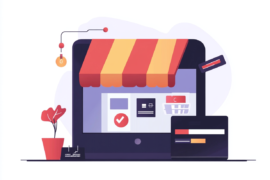Giving your customers the option to avail themselves of flexible payment plans can be a valuable proposition for your business in a variety of ways. For one, it makes your store more attractive to price-conscious customers, as payment plans can make big-ticket purchases much more manageable. Another is that it can improve customer loyalty and satisfaction because they know they can rely on your business to offer them payment plans that suit their varying budgets and needs.
Implementing payment plans for your business, however, should be done with careful consideration and planning to make sure the terms are favorable for both you and your customers. To that end, here are some things to keep in mind as you start offering payment plans.
Make Sure You Have Multiple Payment Methods
Before you start offering flexible payment terms to your customers, evaluate your existing payment methods first. Your business can have the most convenient and affordable payment plans but if paying is inconvenient because your accepted payment methods are limited, then customers will turn away the offer all the same. So, in addition to the usual payment methods such as debit and credit cards, it’s ideal to also accept e-wallets such as Maya and mobile wallets such as Apple Pay and Google Pay as payment methods.
In addition, consider implementing innovative payment solutions to make your payment plans more convenient for your customers. For instance, set up a QR code that your customers can scan to pay or utilize payment links to promptly alert them of their due invoices. To help you generate a free unique payment link for your small business, sign up for a Maya Business account to access its hassle-free payment link solutions.
Customize Your Payment Plans
After making sure your business has multiple payment methods covered, your next step is to determine what kind of payment plans you’ll offer. The ideal approach is to offer multiple variations of your payment plans, customized to suit the varying needs of your customers. For example, if you’re planning on installment plans for your products or services, you can offer 3-, 6-, and 12-month payment periods. Customers who have a limited monthly budget may opt for the longer one, while those who just want some breathing room in their finances would be fine with a shorter term.
Note that you can also modify the amount to be paid per period. For instance, in a three-month payment plan, you can ask for 50% of the payable in the first month then 25% each for the next two months if it’s more ideal for your cash flow. The important thing is to be clear about how much the customer is expected to pay in each payment period, which brings us to the next point.
For entrepreneurs signed up with Maya Business, there’s also an option to offer Maya Credit. With this mode of payment, customers can pay within 30 days of purchase or on their next salary day with minimal service fees. This provides more flexibility and convenience for those who may not have the cash to pay in full immediately.
Set Clear Payment Terms
To avoid any missed payments and misunderstandings, make sure to set clear payment terms. Right from the get-go, state how much the customer is expected to pay for each due date within the payment period. Be transparent about additional charges such as interests or other fees, if any, so there won’t be any surprise to your customer when they receive their invoice.
Additionally, outline payment due dates and any consequences for missing them to ensure that you and your customer are on the same page. Often, misunderstandings arise when invoices sent to customers are incomplete or inaccurate, which can then lead to delayed or missed payments. Avoid this issue by also making sure your invoices contain all the important details of the transaction.
Automate Payment Reminders
Sending timely payment reminders to your customers is crucial to ensure they’re informed on how much to pay and when the due date is, thus reducing the chances of missed payments. However, this process can take time as you’d have to confirm each customer’s balance before sending out the reminders. Streamline this process by automating your payment reminders. Many accounting software have this feature built-in, allowing the application itself to check the balance and send out payment reminders for you, instead of you having to do them manually, thus saving you time and resources.
Consider Offering Early Payment Incentives
Punctual payment from your customers ensures that your business cash flow remains stable. In addition to sending out payment reminders, consider offering early payment incentives as well such as waiving payment processing fees or providing discounts. This can encourage your customers to settle their payments promptly, allowing you to use those funds right away to buy supplies or settle your own payables.
Flexible payment plans are a great way to allow customers with different budgets and means to still purchase your products and services under terms that are manageable for them. What’s more, it promises consistent cash flow for your enterprise, which is especially important if you’re running a small business with limited resources. Let the pointers in this article guide you in formulating your own payment plans so that you can help out your customers while, at the same time, adding a new value proposition for your business as well.
Become an Insider

Subscribe to get a free daily budget planner printable to help get your money on track!
Make passive money the right way. No spam.
Source Citation References:
+ Inspo






























![How to Hire Fintech Software Developers [Cost & Factors] fintech software engineers](https://fangwallet.com/wp-content/uploads/2025/03/fintech-software-engineers-270x180.png)













